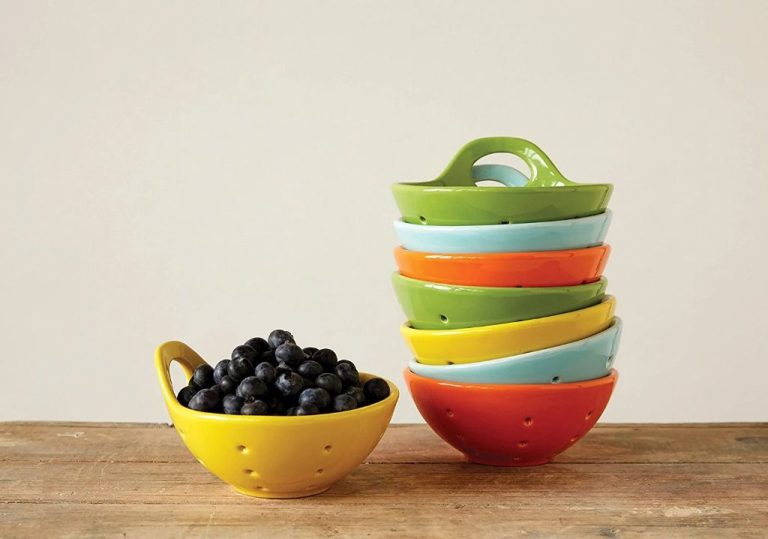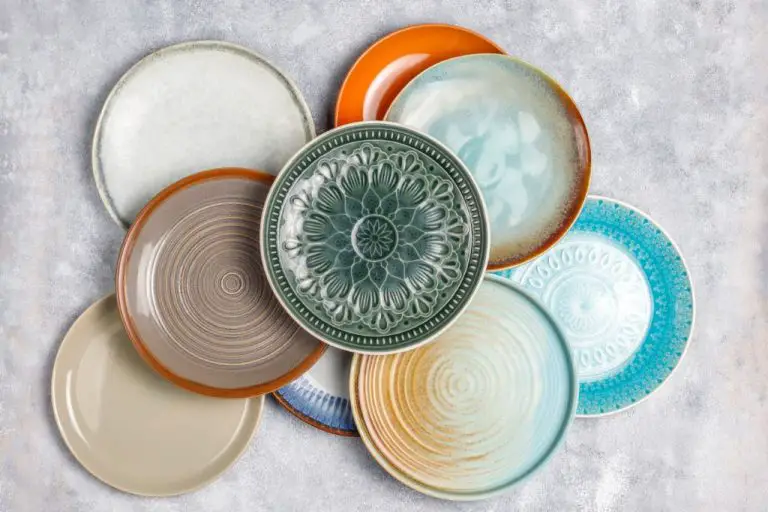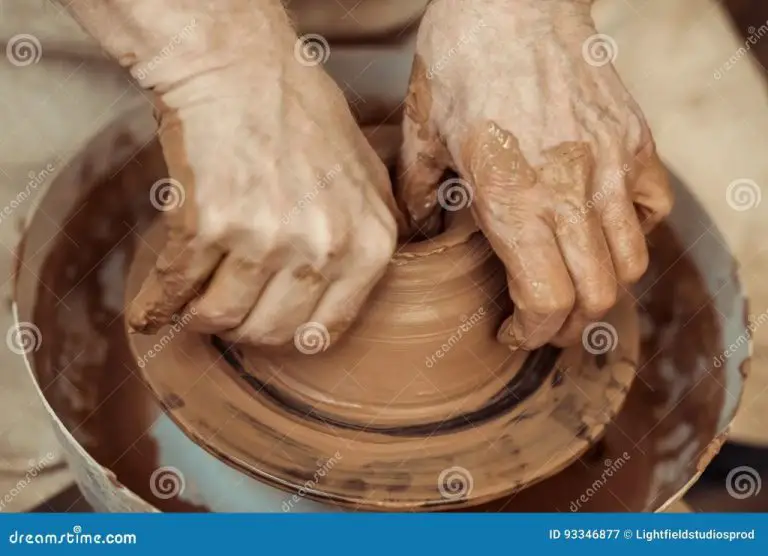What Can Clay Be Used For Ark?
Clay is a naturally occurring material composed primarily of fine-grained minerals, which is plastic when wet and hard when fired at high temperatures. There are many different types of clays that have a wide range of properties and characteristics. Some of the most common uses of clay include pottery, sculpture, masks, bricks and tiles. However clay can be used for a vast array of purposes ranging from large-scale construction to delicate artworks. Clay’s versatility, abundance, and ability to be molded when wet and hardened when fired allow it to be used in so many fascinating ways.
This article will provide an overview of some of the most significant uses of clay throughout history and in modern times. From creating statues and bowls in ancient civilizations to forming construction materials and industrial products today, clay has long been an integral material for crafting both artistic and functional objects.
Pottery
Clay has been used to create pottery and ceramic objects for thousands of years. Evidence of clay pottery dates back over 20,000 years to ancient cultures in East Asia. As early humans transitioned from hunter-gatherer societies to more settled agricultural communities, clay became an important material for creating vessels to store and transport food, water, and other goods.
Over time, clay pottery developed into an essential artform across many ancient civilizations. The earliest known clay vessels were relatively simple oval or rounded pots, but pottery techniques grew more advanced in cultures like Ancient Egypt, Greece, Rome, China, and the Americas. Potter’s wheels were invented to shape vessels with symmetry. Glazes and ornamental decorations evolved to make pottery more beautiful and functional.
There are many different types of pottery named after their place of origin or distinctive styles. These include earthenware, stoneware, porcelain, terracotta, faience, majolica, and raku ware. The specific clay composition and firing method help define the strength, porosity, appearance, and uses of the finished ceramic material.
Mastering the craft of pottery involves multiple techniques. Potter’s wheels give form and shape to vessels. Molding, coiling, slab building, and throwing are hand-shaping methods. Glazing and decorating add colorful designs. Controlled firing hardens and sets the clay at high temperatures in a kiln. Generations of artisans have refined these clay pottery techniques to produce intricate artworks and utilitarian wares.
Sculpture
Clay has been used for sculptural purposes for thousands of years. Some of the earliest known clay sculptures date back to 24,000-22,000 BCE from archeological sites in Czechoslovakia. Sculptures and figurines made from clay and terracotta were prevalent across many ancient civilizations including Egypt, Greece, Rome, China, and the Indus Valley. Clay’s malleability, affordability, and accessibility as a material made it an ideal medium for sculptors throughout history.
Many cultures around the world developed distinct styles and techniques for clay sculpture. The ancient Greeks were renowned for their detailed figurative sculptures depicting gods, goddesses, athletes, and philosophers. In the Tang Dynasty in China, elegant glazed terracotta figurines of humans and animals were produced. During the Renaissance era in Europe, sculptors like Luca della Robbia developed new techniques for colorful glazed terracotta sculpture.
Some of the most famous clay and terracotta sculptures include the army of the Qin Emperor in China, the Venus of Dolní Věstonice from the Paleolithic era, the Terracotta Army warriors of Xi’an, Auguste Rodin’s The Thinker, and the many Madonnas and biblical figures of Luca della Robbia. Modern sculptors like Claude Monet and Edgar Degas also worked extensively with clay and terra cotta.
Clay remains a popular medium for sculpture today due to its versatility, affordability, and expressiveness. Contemporary clay sculptors employ a wide range of techniques including hand-building, wheel-throwing, slipcasting, raku firing, and mixed media assemblage with clay. From abstract avant-garde works to neoclassical figurative bronzes, clay continues to inspire sculptors and sculptural innovations.
Jewelry
Clay has been used to create beautiful jewelry for thousands of years. Some of the earliest known examples of clay jewelry date back to ancient Mesopotamia and include geometric beads, pendants and figurines. The ancient Egyptians also produced elaborate clay jewelry often depicting symbols related to their gods and religious beliefs.
Throughout history, artisans around the world have crafted stunning jewelry from clay due to its versatility, ease of use and availability. Common types of clay jewelry include:
- Beads – Formed into shapes like spheres, tubes and disks then fired
- Pendants – Molded or hand sculpted using techniques like pinch pots and coils
- Rings – Formed on a ring mandrel from clay then fired
- Earrings – Created as dangles, hoops or studs
- Bracelets & Necklaces – Formed from handmade or molded beads and components
To create clay jewelry, the clay is first conditioned to make it soft and pliable. Jewelry components are then formed by hand using techniques like rolling, cutting, molding, sculpting, carving and extruding. The pieces are allowed to dry fully before firing them in a kiln to harden the clay. After firing, the clay pieces can be sanded, polished and decorated. Clays used include polymer clay that cures in a regular oven, air-dry clay and kiln-fired clays like earthenware, stoneware and porcelain.
Jewelry crafted from clay allows for tremendous creativity and customization. It also enables artisans to create one-of-a-kind designs and handmade pieces that reflect their personal vision and style.
Construction
Clay has been used extensively in construction for thousands of years. The earliest known use of fired clay for constructing shelters dates back over 30,000 years ago. Clay’s versatility, durability, and availability have made it an invaluable building material throughout history.
One of the most common uses of clay in construction is for bricks. Clay bricks have been used since ancient times to build structures like homes, buildings, walls, and roads. Bricks are formed by shaping wet clay into rectangular blocks which are then fired in a kiln to harden them. Brick manufacturing techniques evolved over centuries to maximize durability.
Clay tile is another ubiquitous building material, used mainly for roofs and floors. Roof tiles date back to ancient China and Rome. Tile is formed from clay and then glazed or unglazed before firing. The waterproof and fireproof nature of baked clay tiles made them ideal roofing and flooring options before modern materials.
Cob is an ancient material made from clay, sand, straw, and water that is hand-formed into structural walls, often used in sustainable natural building. Cob structures like houses and community ovens continue to be built today. The pliable cob mixture hardens into a sturdy, weather-resistant material when dried.
Modern construction also relies on clay materials. Terracotta panels and architectural cladding lend aesthetic value. Clay piping transports water. Stabilized earth blocks made from clay and cement are an eco-friendly building option. After millennia, clay endures as a fundamental construction material.
Medicinal Uses
Clay has been used for medicinal purposes for centuries. Indigenous cultures around the world have recognized the healing properties of certain clays and incorporated them into traditional medicine practices.
Clay is known to have antibacterial, antiviral and antifungal properties. It can help draw out toxins, excess oils and impurities from skin. Clay masks and poultices have been used to treat skin irritations, bug bites, small wounds and acne. The cooling, soothing nature of clay helps relieve pain and inflammation.
Bentonite clay and Kaolin clay are two types commonly used for medicinal purposes. Bentonite clay is able to absorb toxins and impurities due to its strong negative electromagnetic charge. Kaolin clay is especially good for treating skin conditions because it doesn’t absorb as strongly.
Clay can also be ingested to provide internal healing benefits. Clay supplementation has been used to help with digestive issues, Irritable Bowel Syndrome, acid reflux, nausea, and even heavy metal detoxification. However it’s important research the safety and quality of any ingestible clay first.
The natural healing properties of medicinal clays have been relied on for thousands of years and continue to offer soothing, therapeutic benefits today. When used properly, clay can be an effective, affordable and accessible way to promote health and treat common ailments.
Industry
Clay has many industrial applications due to its versatile physical properties. When fired at high temperatures, clay becomes very hard and durable. This ceramic material has been used to make pottery, bricks, tiles, and other construction materials for thousands of years.
Modern industry uses clay in the manufacturing of porcelain, china, floor and wall tiles, sanitaryware, and tableware. The kaolin type of clay is essential for making paper, fiberglass, rubber, and paint. Kaolin improves the finish and coatability of the paper. Engineered clays are used as fillers and coatings in the making of adhesives, plastics, cosmetics, pharmaceuticals, and more.
Clays absorb odors and pollutants, both organic and inorganic. This makes them ideal for use in filtering systems for industrial waste gases, water purification, and sewage treatment. Their absorbent properties also lend them to use in cat litter, animal feed, and oil and grease absorbents.
Clay’s heat resistance allows it to be used to make refractory ceramic materials that line the insides of kilns and furnaces. The abrasive characteristics of some clays are utilized in cleansers, facial scrubs, and exfoliants. Overall, clay is an essential raw material across many industries and products.
Use of Clay in Agriculture
Clay has a variety of important uses in agriculture and farming. When used properly, clay can help improve soil health, retain moisture, and create habitats for beneficial organisms.
One of the most common agricultural uses of clay is as a major component of potting soil and potting mixes. Most potting mixes contain 20-30% clay, which helps the soil hold nutrients and water. This is crucial for container gardening and houseplants. The clay allows the roots to access air, water, and minerals in the right balance. Too much clay, however, can lead to overly wet soil.
Adding clay to garden beds can also improve native soil structure and fertility. Certain types of clay help sandy soils retain water and nutrients. In clay-rich soils, adding specialty clays or gypsum can improve drainage and aeration. Using clays such as bentonite, vermiculite, or biochar introduces helpful minerals and encourages biological activity.
Clay is a key material for lining and sealing ponds and water features. Compacted clay is an effective, natural liner that prevents water loss through the underlying soil. Bentonite clay is especially useful as pond sealant due to its ability to swell and create an impermeable barrier.
With its malleability, durability, and earthy hues, clay serves many purposes for the environmentally conscious farmer, gardener, or homesteader. From building materials to habitat creation, clay’s versatility and availability helps sustain agricultural systems and connect people with the soil.
Clay in Art
Clay has a long history of being used as an artistic medium for creative expression. Artists utilize clay in many forms such as painting, printing, and modeling to produce stunning works of art.
Painting with clay allows artists to add texture and dimension to their works. Clay paints and slip trails can be applied to canvas or paper to achieve a textured, layered effect. The colors and sheen of clay paints produce unique visual qualities not possible with traditional paints.
Clay can also be used for printing. Artists press clay surfaces or clay-coated linoleum blocks onto paper or fabric to transfer images and patterns. The clay holds fine details beautifully while adding an organic, earthy feel to the prints.
Sculpting and modeling with clay allows artists to craft three-dimensional works. The malleable nature of clay makes it an ideal medium for sculpting lifelike figures, abstract shapes, functional pottery, and more. Artists can continually refine and reshape clay sculptures before firing them in a kiln to harden and preserve the artwork.
From painting, printing, and sculpture, clay offers artists a versatile medium to explore their creativity. The tactile, elemental nature of clay and its flexibility and workability allow for meaningful artistic expressions.
Conclusion
Clay has been an integral part of human civilization for thousands of years. Its unique properties make it useful for a wide range of applications, from creating beautiful works of art to manufacturing industrial products. As we’ve seen, some of the most common uses of clay include pottery, sculpture, jewelry, construction materials, medicine, manufacturing, agriculture, and art.
Clay’s ability to be shaped when wet and become hard when fired allows artisans to craft delicate pottery and sturdy bricks. Its chemical composition allows it to remove toxins from the body and provide nutrients to crops. The versatility of clay has made it one of the most ubiquitous materials throughout history. Looking ahead, clay will likely continue serving humanity in both artistic and practical ways for generations to come.




